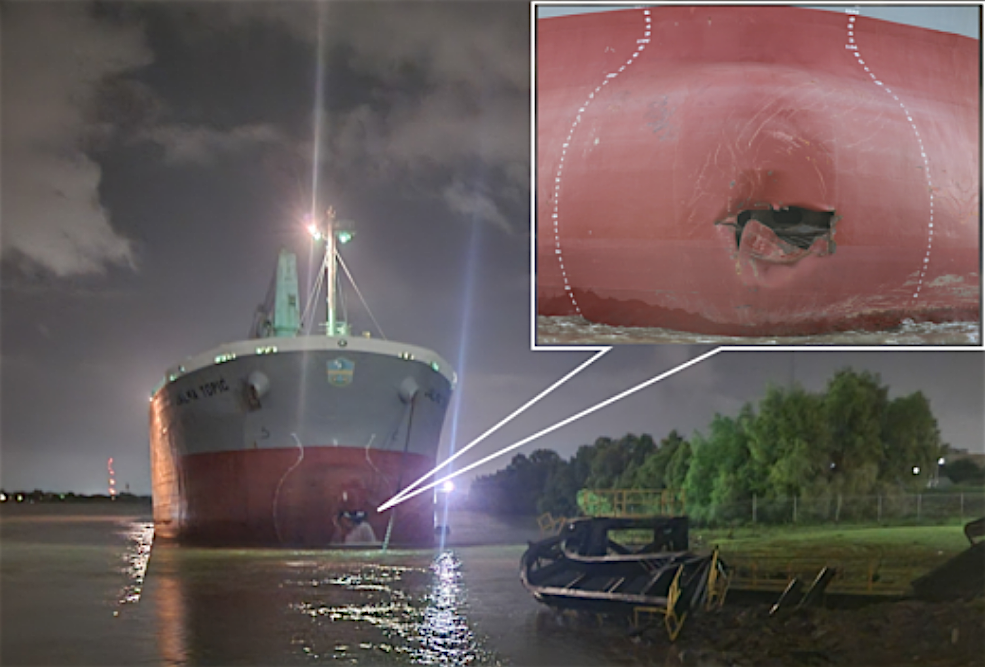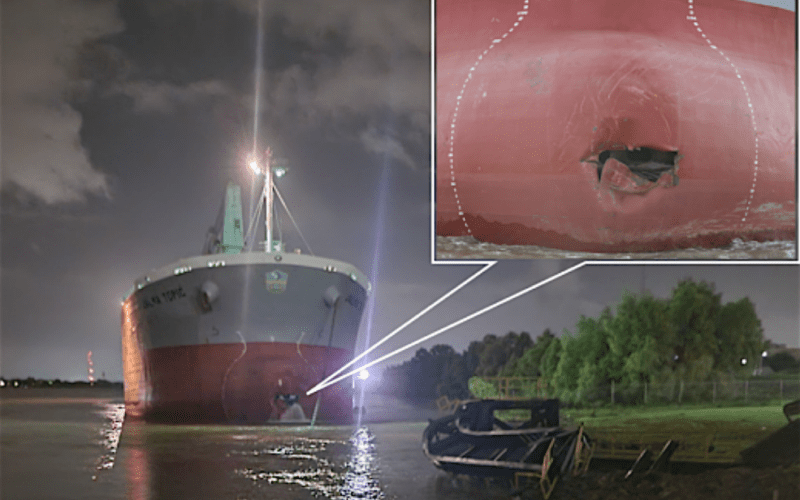(WASHINGTON) — A bulk carrier’s loss of steering led to an estimated $6 million in damage when it struck a barge near New Orleans, the National Transportation Safety Board (NTSB) recently determined.
On July 12, 2021, Jalma Topic was transiting upriver on the Lower Mississippi River when it lost steering and struck a stationary barge that was being used for office space. No injuries were reported.

During the voyage, the ship’s rudder became stuck at port 10 degrees. According to the NTSB report, when the pilot noticed the rudder was not responding, he took immediate and effective action to ensure the people on board the office barge were warned of the situation and attempted to slow the vessel as much as possible.
The office barge sustained damage to its superstructure and its hull. Electrical, plumbing and communication connections to the shore were severed, and the heating ventilation and air conditioning systems were damaged. The mooring system and all gangways and surrounding catwalks to the barges were either damaged or destroyed.
During the investigation, a technician found that a solid-state relay on the operating steering control system servo control board had failed, causing the loss of steering. In addition, the investigation found the steering control system manufacturer, YDK Technologies, had created a caution sticker and released an important notice to vessels with PT500 autopilot systems in December 2014 that addressed the failure experienced on Jalma Topic. However, the ship’s operator stated they were not notified of the notice and caution sticker until after the casualty incident.
The NTSB determined the probable cause of the contact of Jalma Topic with the office barge was a loss of steering due to the failure of an electrical solid-state relay on the servo control board of the operating control system to the steering gear. Contributing was the lack of specific procedures available to the bridge team to respond to a failure of the steering control system.
“Failures in steering control systems can result in damaging consequences,” the report said. “Companies should review and identify potential steering system failures and make quick response procedures readily available to bridge and engine teams. Bridge and engine teams should conduct scenario-based drills to maintain proficiency in implementing these procedures.”
Marine Investigation Report 22/23 is available here.
– National Transportation Safety Board

